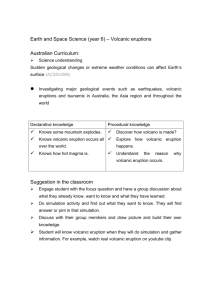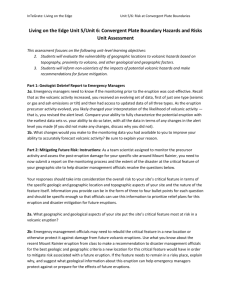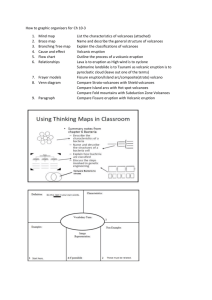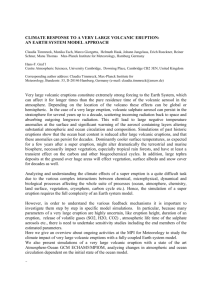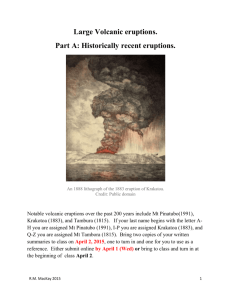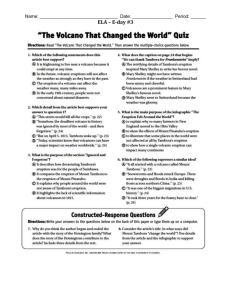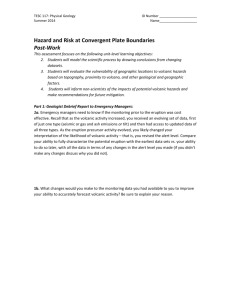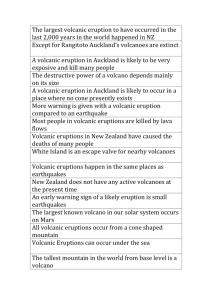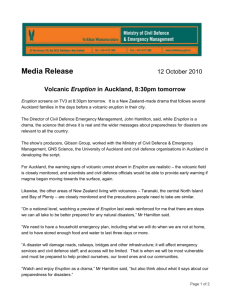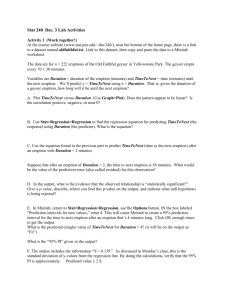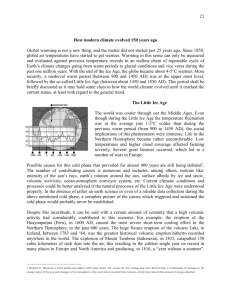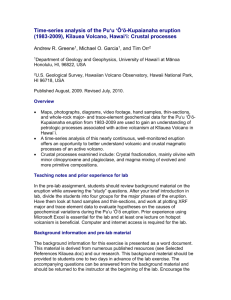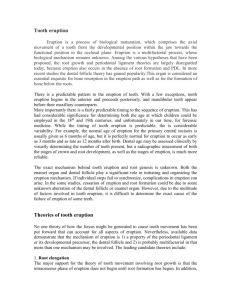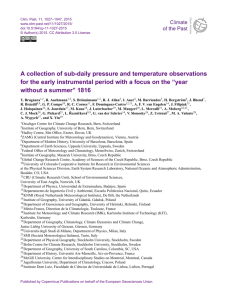The Year Without a Summer In 1815 a volcano erupted at Mount
advertisement
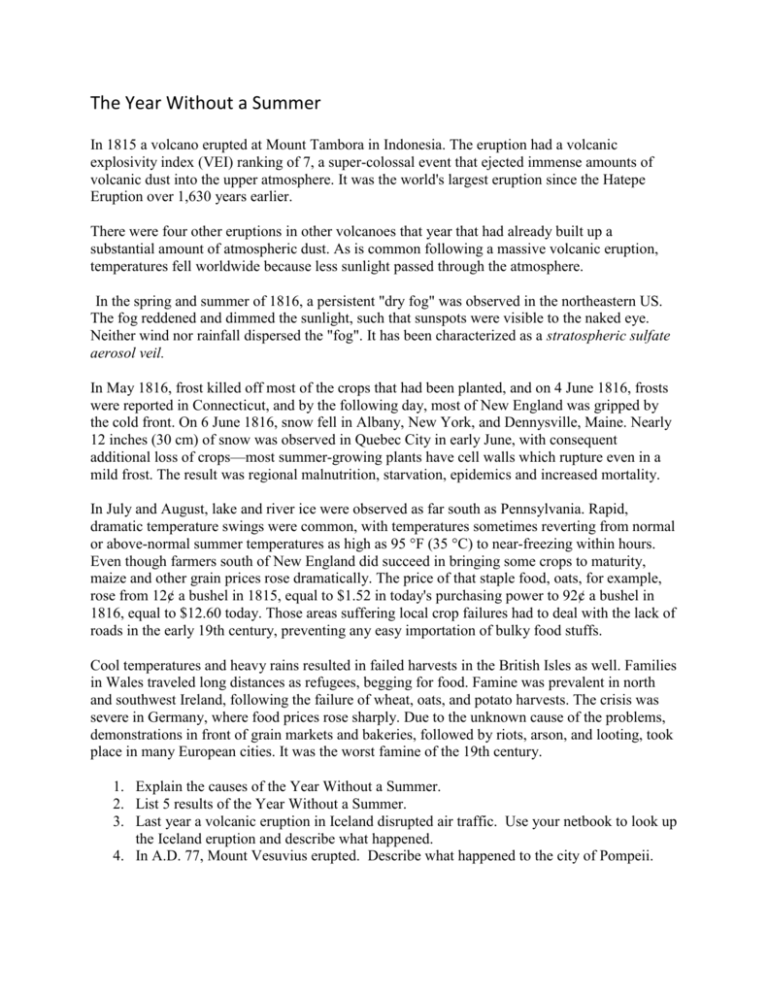
The Year Without a Summer In 1815 a volcano erupted at Mount Tambora in Indonesia. The eruption had a volcanic explosivity index (VEI) ranking of 7, a super-colossal event that ejected immense amounts of volcanic dust into the upper atmosphere. It was the world's largest eruption since the Hatepe Eruption over 1,630 years earlier. There were four other eruptions in other volcanoes that year that had already built up a substantial amount of atmospheric dust. As is common following a massive volcanic eruption, temperatures fell worldwide because less sunlight passed through the atmosphere. In the spring and summer of 1816, a persistent "dry fog" was observed in the northeastern US. The fog reddened and dimmed the sunlight, such that sunspots were visible to the naked eye. Neither wind nor rainfall dispersed the "fog". It has been characterized as a stratospheric sulfate aerosol veil. In May 1816, frost killed off most of the crops that had been planted, and on 4 June 1816, frosts were reported in Connecticut, and by the following day, most of New England was gripped by the cold front. On 6 June 1816, snow fell in Albany, New York, and Dennysville, Maine. Nearly 12 inches (30 cm) of snow was observed in Quebec City in early June, with consequent additional loss of crops—most summer-growing plants have cell walls which rupture even in a mild frost. The result was regional malnutrition, starvation, epidemics and increased mortality. In July and August, lake and river ice were observed as far south as Pennsylvania. Rapid, dramatic temperature swings were common, with temperatures sometimes reverting from normal or above-normal summer temperatures as high as 95 °F (35 °C) to near-freezing within hours. Even though farmers south of New England did succeed in bringing some crops to maturity, maize and other grain prices rose dramatically. The price of that staple food, oats, for example, rose from 12¢ a bushel in 1815, equal to $1.52 in today's purchasing power to 92¢ a bushel in 1816, equal to $12.60 today. Those areas suffering local crop failures had to deal with the lack of roads in the early 19th century, preventing any easy importation of bulky food stuffs. Cool temperatures and heavy rains resulted in failed harvests in the British Isles as well. Families in Wales traveled long distances as refugees, begging for food. Famine was prevalent in north and southwest Ireland, following the failure of wheat, oats, and potato harvests. The crisis was severe in Germany, where food prices rose sharply. Due to the unknown cause of the problems, demonstrations in front of grain markets and bakeries, followed by riots, arson, and looting, took place in many European cities. It was the worst famine of the 19th century. 1. Explain the causes of the Year Without a Summer. 2. List 5 results of the Year Without a Summer. 3. Last year a volcanic eruption in Iceland disrupted air traffic. Use your netbook to look up the Iceland eruption and describe what happened. 4. In A.D. 77, Mount Vesuvius erupted. Describe what happened to the city of Pompeii.

